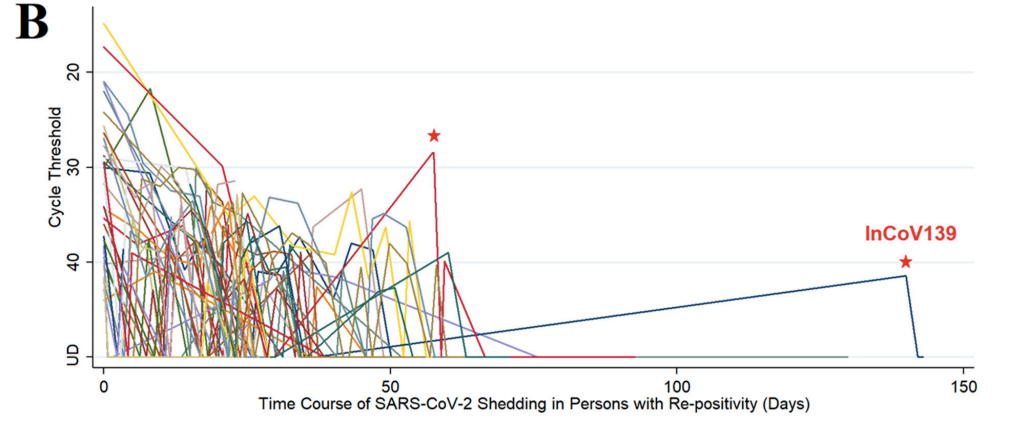
Jason D. Goldman, Kai Wang, Katharina Röltgen, Sandra C. A. Nielsen, Jared C. Roach,* ,
Samia N. Naccache, Fan Yang, Oliver F. Wirz, Kathryn E. Yost, Ji-Yeun Lee, Kelly Chun, Terri Wrin,
Christos J. Petropoulos, Inyoul Lee, Shannon Fallen, Paula M. Manner, Julie A. Wallick, Heather A. Algren, Kim M. Murray, Jennifer Hadlock, Daniel Chen, Chengzhen L. Dai, Dan Yuan,
Yapeng Su, Joshua Jeharajah, William R. Berrington, George P. Pappas, Sonam T. Nyatsatsang,
Alexander L. Greninger, Ansuman T. Satpathy, John S. Pauk, Scott D. Boyd, and James R. Heath
Vaccines, 20 December 2022
Recovery from COVID-19 is associated with production of anti-SARS-CoV-2 antibodies, but it is uncertain whether these confer immunity. We describe viral RNA shedding duration in hospitalized patients and identify patients with recurrent shedding. We sequenced viruses from two distinct episodes of symptomatic COVID-19 separated by 144 days in a single patient, to conclusively describe reinfection with a different strain harboring the spike variant D614G. This case of reinfection was one of the first cases of reinfection reported in 2020. With antibody, B cell and T cell analytics, we show correlates of adaptive immunity at reinfection, including a differential response in neutralizing antibodies to a D614G pseudovirus. Finally, we discuss implications for vaccine programs and begin to define benchmarks for protection against reinfection from SARS-CoV-2.